On July 10, 1559, Mary Stuart became the Queen Consort of France after the death of King Henry II of France. Mary was already Queen of Scotland at this time, after the death of her father, James V of Scotland. However, Mary’s position as the Queen of France lasted about 18 months after the unexpected death of her husband, King Francis II.

Mary, Queen of Scots Becomes the Queen of France
On July 10, 1559, Mary, Queen of Scots, became the Queen Consort of France. Her reign lasted around 18 months before she returned to Scotland.
The Birth of Mary, Queen of Scots
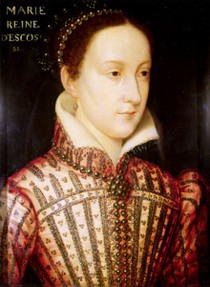 Mary Stewart was born to James V of Scotland and his wife, Mary of Guise on December 8, 1542. Mary of Guise was James’ second wife but the only one to give him a legitimate child to outlive the king. She was Elizabeth I’s cousin through her father’s side – Margaret Tudor, sister of Henry VIII, was her grandmother.
Mary Stewart was born to James V of Scotland and his wife, Mary of Guise on December 8, 1542. Mary of Guise was James’ second wife but the only one to give him a legitimate child to outlive the king. She was Elizabeth I’s cousin through her father’s side – Margaret Tudor, sister of Henry VIII, was her grandmother.
James V died shortly after the Battle of Solway Moss, possibly due to a nervous collapse or due to drinking bad water during the battle, on December 14 of that year. Mary was just six days old and had never met her father during that time. Incidentally, it was very similar for James V, whose father (James IV) died while on the battlefield when he was a young age.
James apparently said “It came with a lass, it will pass with a lass!” when he heard of the birth of his daughter. It was due to the marriage of Marjorie Bruce to Walter Stewart that the crown passed to his family but it would be lost because of a woman. However, it was not because of Mary that the crown was lost to the Stewart line – it was during the 1700s when Anne, Queen of Great Britain, died without issue.
Mary had many regents to rule the country for her. There were two claims to Regency: Earl of Arran (the next in line) and Cardinal Beaton. Arran succeeded due to the support and it helped continue to shape Scotland into a protestant country. It was in 1554 that Arran lost the Regency to Mary of Guise.
Opportunities for Mary, Queen of Scots to Marry
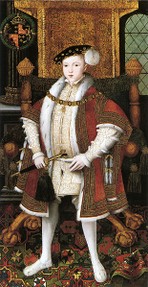 Mary had many options for marriage from a very young age. The first of those was from Henry VIII of England. He was looking for someone to marry his son, Edward Tudor (later Edward VI of England), and hoped the Treaty of Greenwich would secure that. The treaty was sign on July 1, 1543, and the two were betrothed. Mary would move to England when she turned 10 and be raised under him. Scotland and England would remain as separate countries and only joined temporarily under that union.
Mary had many options for marriage from a very young age. The first of those was from Henry VIII of England. He was looking for someone to marry his son, Edward Tudor (later Edward VI of England), and hoped the Treaty of Greenwich would secure that. The treaty was sign on July 1, 1543, and the two were betrothed. Mary would move to England when she turned 10 and be raised under him. Scotland and England would remain as separate countries and only joined temporarily under that union.
Cardinal Beaton stopped the betrothal in its tracks. Beaton wanted to move towards a Catholic and French alliance; something that Henry VIII didn’t want. Mary was moved to Stirling Castle for her safety, along with her mother. However, Arran was still regent at this time and nothing happened until Henry VIII arrested Scottish merchants heading for France and impounded their goods. This angered Arran and led to the rejection of the Treaty of Greenwich in December 1543.
The Auld Alliance was renewed between Scotland and France, leading to raids from England on territories belonging to France and Scotland. Mary had to be taken to Dunkeld in May 1544 for her own safety after the Earl of Hertford raided Edinburgh. Even after Henry VIII’s death in 1547, Scotland was suffering heavy defeats from the English army. Mary’s guardians turned to the French for help to protect her.
This was when Henry II of France proposed a marriage between Mary and his own son, Francis. Francis was just three-years-old at the time while Mary was now four. Arran agreed and Mary moved to Dumbarton Castle in February 1548. France didn’t manage to help until June of that year and July 7, 1548 saw the agreement to the marriage treaty in the Scottish Parliament.
Mary, Queen of Scots Raised Catholic
Mary moved to France shortly after the agreement of the treaty and spent 13 years being raised as a French Princess, in preparation to become the Queen Consort. The problem was that France was still a Catholic country, while Scotland was protestant. This would cause some problems in the future.
Mary was accompanied to France by her two half-brothers, both of which were illegitimate, and four girls all named Mary; known as the “four Marys”. They were daughters were around her own age and daughters of the nobles families, Livingston, Seton, Fleming and Beaton. Lady Fleming, James V’s half-sister, went with them and was appointed governess.
Mary was extremely smart and beautiful, making her a favourite with all except her future mother-in-law, Catherine de’ Medici. She learnt many different subjects, including needlework, poetry, Italian, French, Spanish, Latin and Greek, while continuing to speak her native language. She became close to Elisabeth of Valois, Francis’ sister, and gained a strong advisor and influence from Antoinette de Bourbon.
Henry II commented how Francis and Mary got along straight away. It was as if they’d known each other for years. This would help for later years as the two had a very happy marriage until his death.
Read More About Elizabeth I of England
 |  |  |
| The Life of Elizabeth I | Elizabeth I | Elizabeth I [DVD] |
Mary, Queen of Scots Gives Up Her English Throne
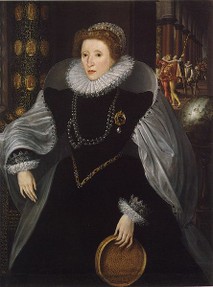 On April 4, 1558, there was a secret agreement signed by Mary. It stated that she bestowed her Scottish crown and claim to the English throne to France should she die without issue. 20 days after that, the two married and Francis immediately became the King Consort of Scotland.
On April 4, 1558, there was a secret agreement signed by Mary. It stated that she bestowed her Scottish crown and claim to the English throne to France should she die without issue. 20 days after that, the two married and Francis immediately became the King Consort of Scotland.
Five years earlier, giving up her heritage like this would not have been such a big deal. Henry VIII had made it clear he did not want his Scottish family to gain the English crown and Edward VI attempted to play Lady Jane Grey – cousin through Henry’s sister, Mary Tudor – on the throne. However, Mary I of England was close to death and only Elizabeth Tudor was left before Mary, Queen of Scots.
In 1558, Elizabeth was view as illegitimate by the Catholics and, therefore, unable to take the throne. Mary was, in their eyes, the rightful Queen of England. In November 1558, upon the death of Mary I of England, Henry II declared his daughter-in-law the Queen of England, making his son the King of England. This was a major problem for Elizabeth over the next 31 years,leading to Mary’s execution.
The Death of Henry II of France
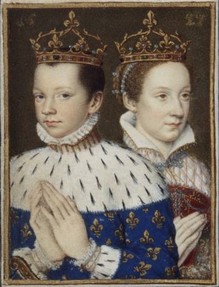 Henry II died unexpectedly due to a jousting accident. Henry was celebrating the marriage of his daughter, Elisabeth, to Philip II of Spain (Mary I of England’s widower husband) and the Peace of Cateau-Cambresis with the Habsburgs of Austria, who were long-time enemies. It was during a joust with Gabriel Montgomery, the King’s Scottish Guard captain, that fragments from the lance splinted into Henry’s head. Ambroise Pare attempted to save the King of France but he died of septicemia on July 10, 1559.
Henry II died unexpectedly due to a jousting accident. Henry was celebrating the marriage of his daughter, Elisabeth, to Philip II of Spain (Mary I of England’s widower husband) and the Peace of Cateau-Cambresis with the Habsburgs of Austria, who were long-time enemies. It was during a joust with Gabriel Montgomery, the King’s Scottish Guard captain, that fragments from the lance splinted into Henry’s head. Ambroise Pare attempted to save the King of France but he died of septicemia on July 10, 1559.
16-year-old Mary was announced as Queen Consort of France on that day, while her 15-year-old husband became King of France. It was a difficult time for Mary as she was very close to her father-in-law. She ruled Scotland, with her husband, until his death on December 5, 1560.
Read More About Mary, Queen of Scots
 |  |  |
| Mary Queen of Scots | Mary, Queen of Scots [Blu-ray] Only $14.99 | Mary Queen of Scots (2018) Only $16.79 |
You might also like
Haddon Hall: An Elizabethan Love Story That Shocked SocietyWhen the heiress of Haddon Hall eloped with her lover, Elizabethan society he...
Elizabeth I Contracts Smallpox: How Her Illness Changed Her Ap...The portraits of Elizabeth I don't show her true appearance. When she was 29,...
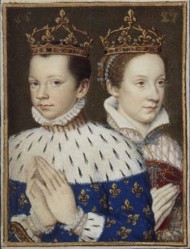


 Alternate History: What If Mary I Had a Child?on 01/26/2015
Alternate History: What If Mary I Had a Child?on 01/26/2015
 Francis II of France Dies: Mary, Queen of Scots Returns Homeon 12/05/2014
Francis II of France Dies: Mary, Queen of Scots Returns Homeon 12/05/2014
 Does Writedge Pay? Payment Proofon 12/03/2014
Does Writedge Pay? Payment Proofon 12/03/2014
 Alternate History: What If Lady Jane Grey Was Not Deposed?on 11/11/2014
Alternate History: What If Lady Jane Grey Was Not Deposed?on 11/11/2014
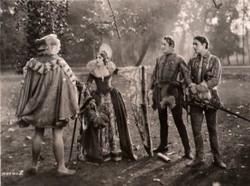
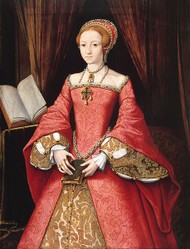
Comments